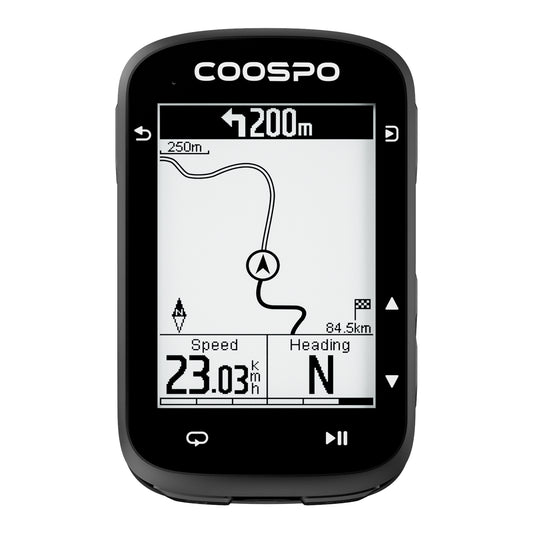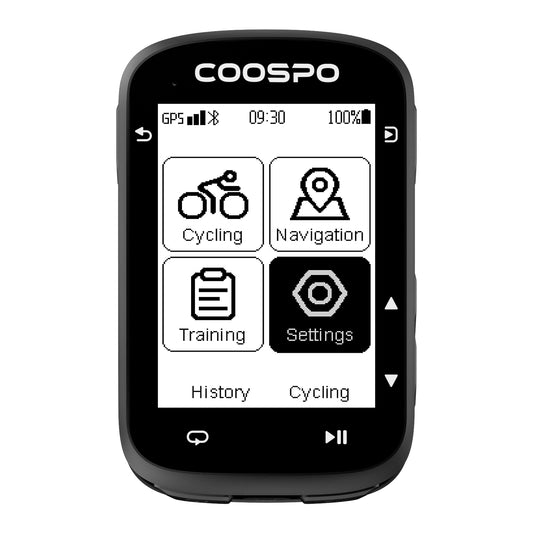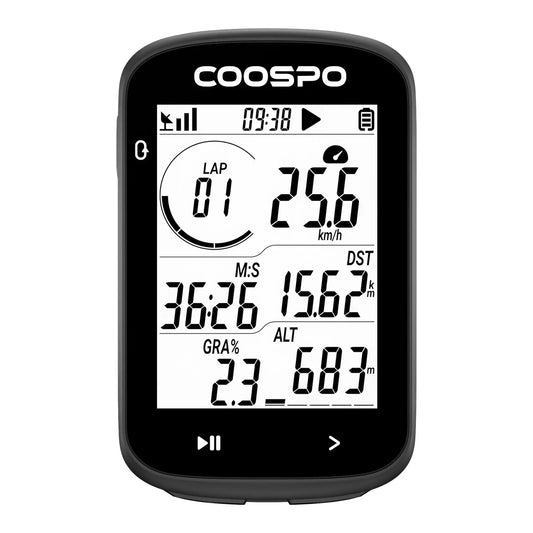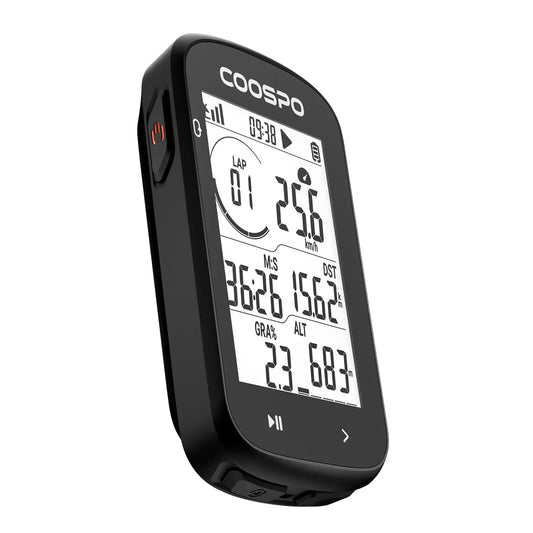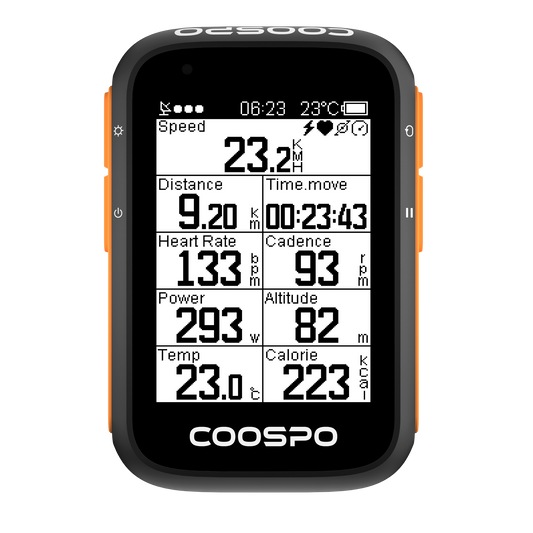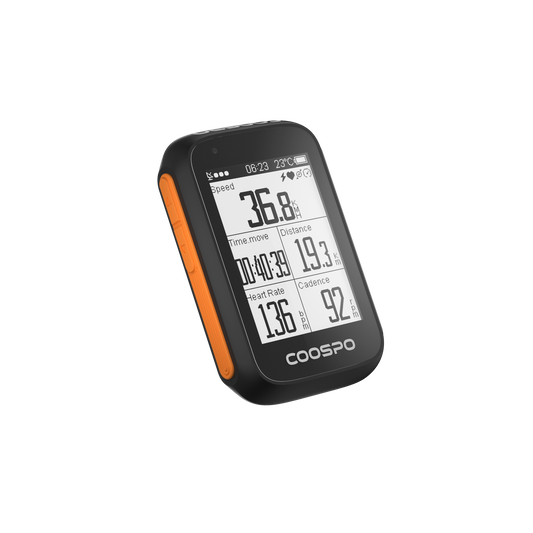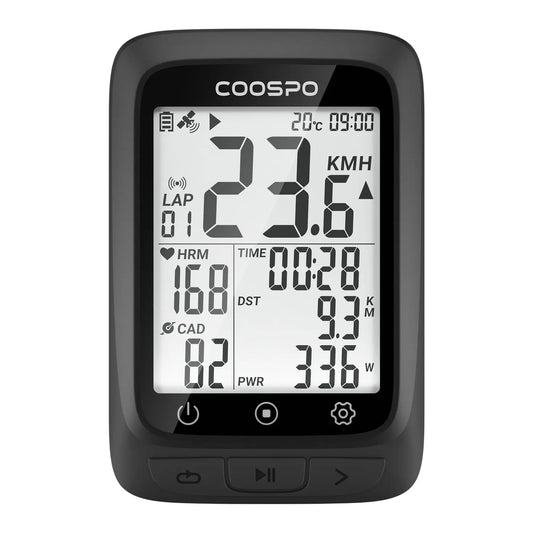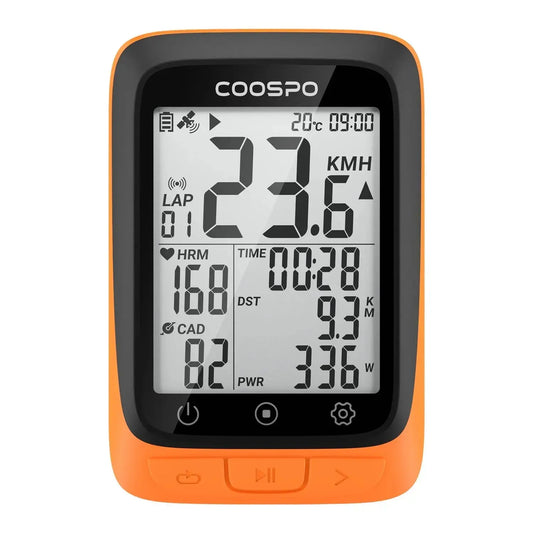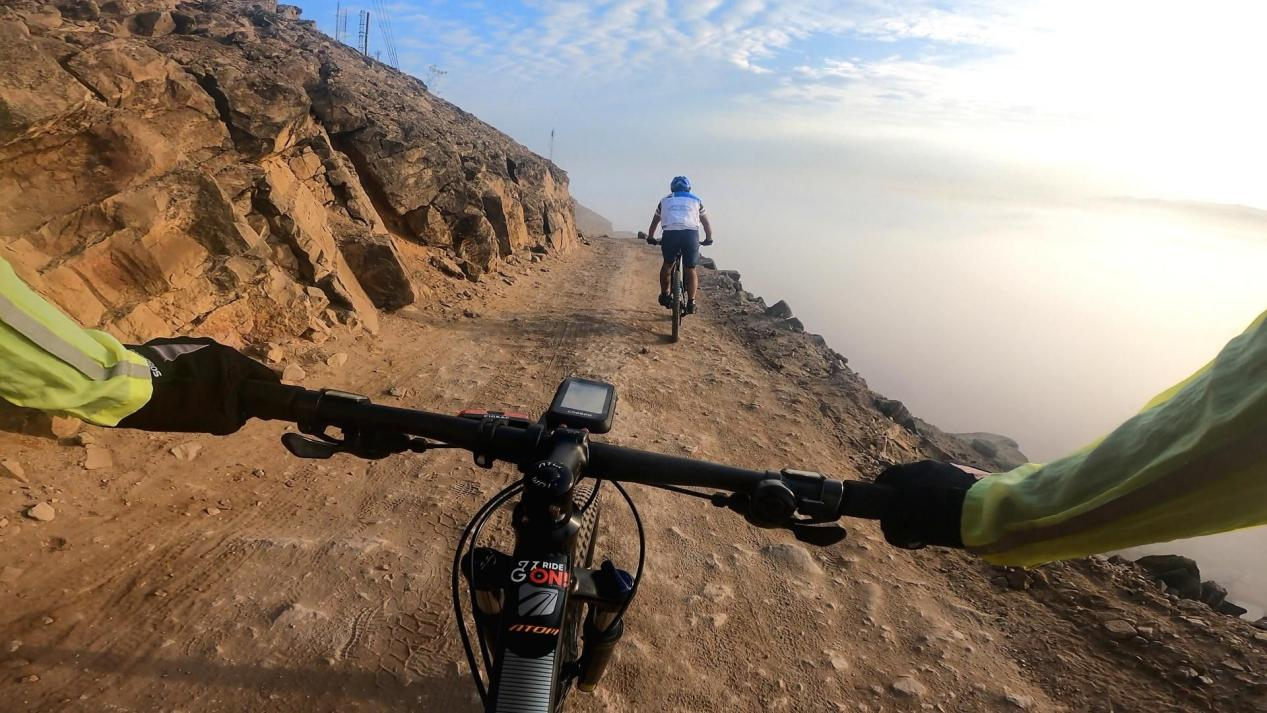Débloquez votre endurance: pourquoi courir la cadence pourrait être le secret pour des courses plus longues
La plupart des coureurs passionnés se concentrent sur trois objectifs principaux : aller plus vite, développer leur endurance tout en évitant les blessures et courir sur de plus longues distances. Ces objectifs contribuent à maintenir une forte motivation et à soutenir un engagement durable dans le sport.
Vous vous demandez peut-être : « Comment puis-je améliorer ma vitesse de course ? » Il peut être difficile de déterminer le meilleur point de départ, c'est pourquoi il est utile de disposer de certaines connaissances de base.
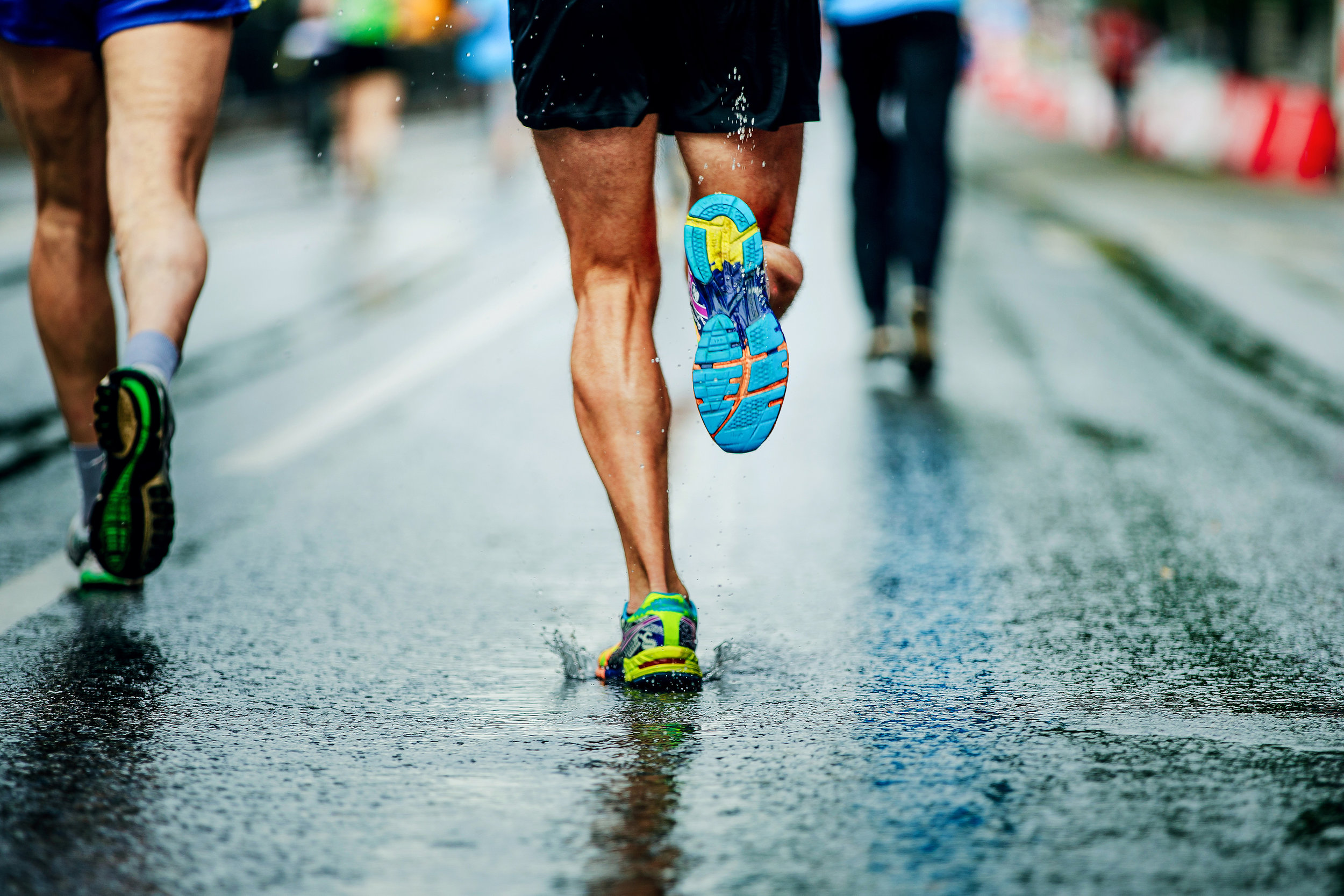
Il existe deux principales façons de courir plus vite. La première consiste à faire des foulées plus longues. La seconde consiste à augmenter la fréquence de vos pas, ce que l'on appelle cadence de course.
Qu'est-ce qu'une cadence de course ?
La cadence de course correspond au nombre de pas effectués par un coureur chaque minute, également appelé fréquence de foulée ou rotation du pied. C'est un élément important de la technique de course. Pour mesurer la cadence, comptez le nombre de fois qu'un pied touche le sol en une minute, puis doublez ce nombre. La plupart des coureurs amateurs ont une cadence d'environ 160 à 170 pas par minute, tandis que les coureurs d'élite visent généralement environ 180 pas par minute pour une meilleure efficacité.
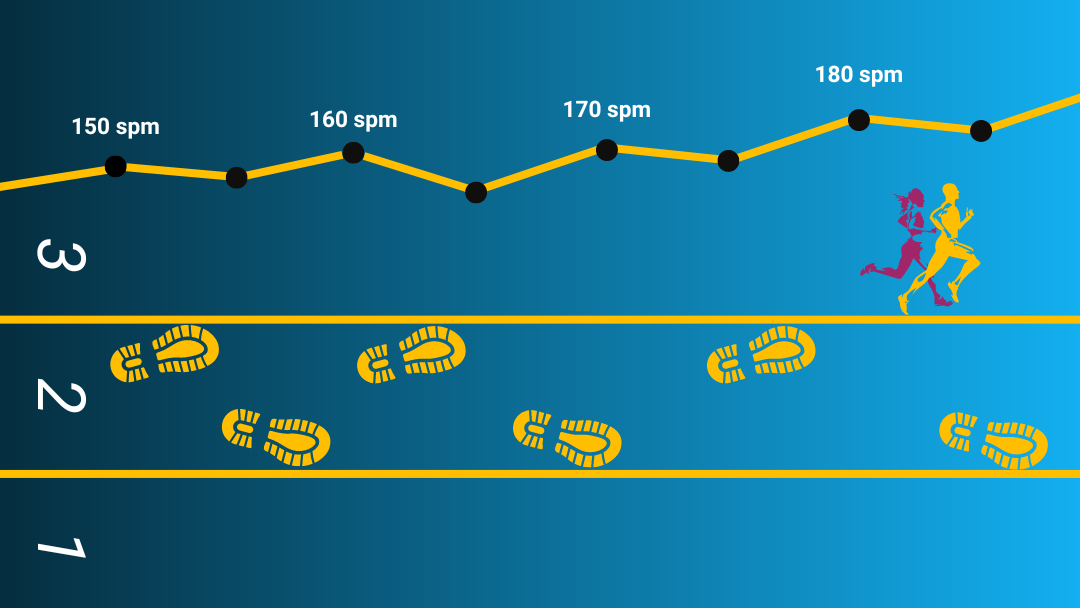
La cadence a un impact significatif sur les performances et la mécanique de course. Un mouvement de pied plus rapide signifie un temps de contact au sol plus court, favorisant un rythme de course plus fluide. Ce rythme amélioré peut minimiser les mouvements inutiles, tels que les mouvements verticaux inutiles, qui peuvent fatiguer les muscles et les articulations au fil du temps.
La cadence de course correspond au nombre de pas que vous effectuez en une minute lorsque vous courez. On l'appelle aussi :
- fréquence de foulée
- fréquence de pas
- rotation du pied
Le nombre de pas que vous faites par minute dépend de plusieurs facteurs. L'un des plus importants est votre taille.
Les coureurs de grande taille, qui maintiennent une vitesse constante, ont généralement des foulées plus longues et une cadence plus lente que leurs homologues plus petits. En revanche, les coureurs plus petits doivent adopter un rythme de foulée plus rapide pour parcourir la même distance dans le même laps de temps.
En course sur pente ou en descente, la cadence est fortement influencée. La course en montée entraîne généralement une augmentation de la cadence, accompagnée d'un raccourcissement de la longueur des pas. Ces deux adaptations servent à répondre aux besoins énergétiques accrus de la montée. À l'inverse, en descente, la cadence a tendance à diminuer tandis que la longueur des pas augmente, ce qui permet un meilleur contrôle du corps.
Pourquoi la cadence de course est-elle importante ?
La cadence est liée au rythme ; une fréquence de pas plus rapide peut aider les coureurs à maintenir un rythme régulier, ce qui est important pour les longues courses comme les marathons et les semi-marathons.
Comme mentionné précédemment, la cadence a un effet sur la vitesse de course. Une augmentation de la cadence de course vous aide courir plus vite.
Une étude récente a démontré que l'augmentation de la vitesse est systématiquement associée à une fréquence de frappe plus élevée. En comprenant mieux votre cadence de course, vous pouvez réduire efficacement la fatigue, ce qui vous permet de courir plus longtemps.
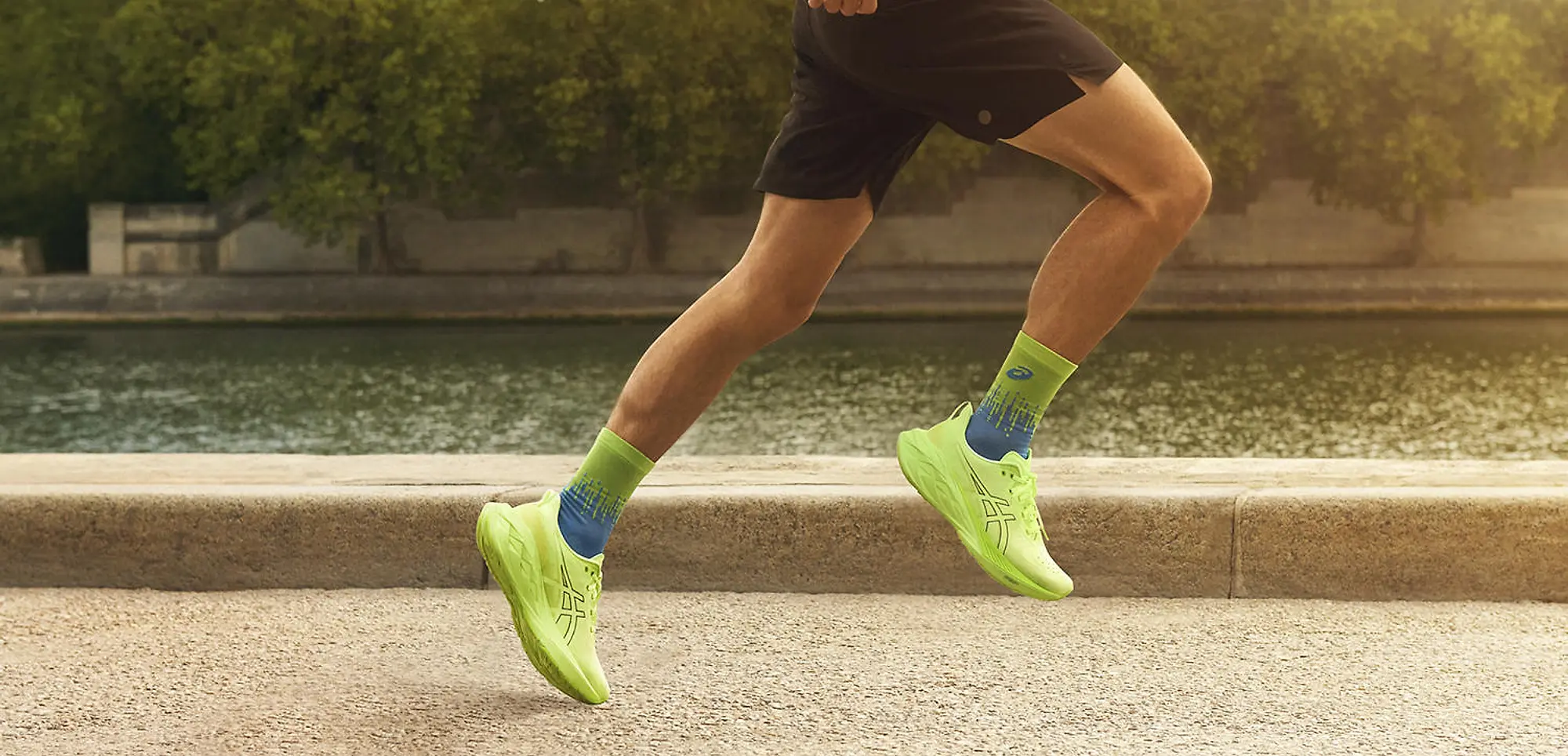
Une cadence plus élevée signifie que vous faites plus de pas par minute, ce qui aide réduire les forces d'impact sur votre corps lorsque votre pied touche le sol. En termes plus simples, courir avec une cadence plus élevée entraîne moins de stress sur votre corps.
Un taux de pas plus élevé est lié à une risque de blessure moindre. Essentiellement, faire des pas plus courts et augmenter le nombre de pas que vous faites par minute réduit le stress sur votre corps. Ce changement affecte également les forces exercées sur votre corps qui peuvent entraîner des blessures.
Ces facteurs comprennent une réduction du déplacement vertical du corps pendant la course, une diminution du temps de contact avec le sol et une amélioration de l’absorption des chocs, ce qui entraîne une diminution des forces d’impact au niveau des articulations de la cheville, du genou et de la hanche.
Une étude a observé une diminution de la consommation de VO2 à des cadences plus élevées. Ce résultat indique qu'à des cadences élevées, les individus peuvent maintenir un niveau spécifique d'effort aérobique tout en dépensant moins d'énergie, ce qui conduit finalement à une réduction de la fatigue.
Les forces de freinage sont également réduites lorsque l’on roule à une cadence plus élevée.
La force de freinage maximale représente la force horizontale nécessaire pour ralentir l'élan vers l'avant d'un coureur. Ce phénomène se produit lorsque le pied avant heurte le sol, transférant l'énergie de l'avant vers l'arrière de la jambe.
Une étude a révélé que lorsque les coureurs appliquent plus de force lors du freinage, ils ont plus de risques de se blesser. En faisant plus de pas par minute, les coureurs ont des foulées plus courtes. Des foulées plus courtes signifient qu'il faut moins de force pour ralentir ou s'arrêter, ce qui peut réduire le risque de blessure.
Des recherches ont montré que courir à un rythme d'environ 180 pas par minute favorise une foulée au niveau du médio-pied. Ce type de foulée répartit les forces d'impact de manière plus uniforme sur les pieds et les jambes. Par conséquent, cela peut améliorer l'efficacité de la course, aidant les coureurs à économiser de l'énergie et à parcourir de longues distances plus confortablement.
Comment déterminer votre cadence de course
Déterminer votre cadence de course est un processus simple. Suivez ces étapes pour une mesure précise :
- Réglez une minuterie sur 60 secondes, mais évitez de la démarrer tout de suite.
- Commencez à courir à votre rythme préféré.
- Démarrez le chronomètre et commencez à compter chaque pas, en notant chaque fois qu'un pied touche le sol. Pour plus de simplicité, vous pouvez choisir de ne compter qu'un seul pied (par exemple, votre pied gauche).
- À la fin des 60 secondes, le nombre total de pas comptés représentera votre cadence. Si vous avez choisi de ne compter qu'un seul pied, multipliez simplement ce chiffre par deux. Par exemple, si vous avez enregistré 92 pas du pied gauche en une minute, votre cadence s'élèvera à 184 pas par minute.
Il faut savoir que compter vos pas peut légèrement fausser vos résultats, car vous savez que vous vous testez vous-même. Cela peut entraîner un biais de performance. Cependant, compter les pas par minute reste un moyen simple et précis de mesurer la cadence.
Une fois que vous connaissez votre cadence, vous pouvez déterminer si elle correspond à la plage recommandée. Si elle tombe en dessous de 170 SPM, travailler progressivement vers une cadence plus élevée pourrait améliorer votre technique de course et vos performances.
Conseils pour améliorer votre cadence de course
Selon la sagesse populaire, la cadence optimale d'un coureur est de 180 pas par minute ou plus. Cette mesure remonte aux Jeux olympiques de 1984, lorsque Jack Daniels (un célèbre entraîneur de course à pied, pas l'homonyme du whisky) a compté les pas des coureurs d'élite en compétition.
Mais en réalité, la plupart des coureurs amateurs ont probablement une cadence de pas comprise entre 150 et 170 pas par minute. Néanmoins, une cadence plus élevée peut certainement être bénéfique pour tout le monde.
L'amélioration de la cadence est un processus progressif, car des changements radicaux peuvent entraîner de la fatigue, voire des blessures. Voici quelques stratégies efficaces :
Commencez petit et augmentez progressivement Essayez d'augmenter votre cadence de 5 à 10 % par rapport à votre rythme actuel. De petites améliorations au fil du temps aideront votre corps à s'adapter au nouveau rythme sans effort.
Utilisez un métronome ou une liste de lecture axée sur la cadence Les applications de métronome ou les listes de lecture musicales avec des rythmes correspondant à votre cadence cible peuvent vous aider à maintenir la régularité. Faire correspondre vos pas à un rythme régulier peut rendre le processus plus fluide et plus agréable.
Raccourcissez votre foulée Concentrez-vous sur des pas plus courts et plus rapides plutôt que sur des foulées plus longues. Cela augmentera naturellement votre cadence et réduira l'impact sur vos articulations.
Incorporer des exercices Des exercices comme les genoux hauts, les pieds rapides et les coups de pied aux fesses peuvent renforcer la mémoire musculaire nécessaire à une cadence plus élevée. Ces exercices améliorent également la forme et la mécanique de course.
Utilisez des chaussures et un terrain adaptés Des chaussures légères avec moins d'amorti peuvent favoriser une rotation plus rapide en réduisant le temps que vos pieds passent au sol. De même, s'entraîner sur des surfaces planes ou régulières peut vous aider à maintenir la cadence sans distractions inutiles.
Conclusion
La cadence de course joue un rôle essentiel dans l'amélioration des performances et la réduction des risques de blessures. Visez 170 à 180 pas par minute (SPM) pour minimiser l'impact sur les articulations et améliorer l'efficacité de la course. Cependant, la cadence idéale varie en fonction de facteurs personnels tels que la taille et le niveau de forme physique.

Intégrer des outils axés sur la cadence, tels qu'un Moniteur de fréquence cardiaque Coospo, peut vous aider à optimiser votre entraînement. Le suivi de la fréquence cardiaque vous permet de maintenir la bonne intensité sans effort excessif, ce qui vous permet de courir plus longtemps et en toute sécurité.



